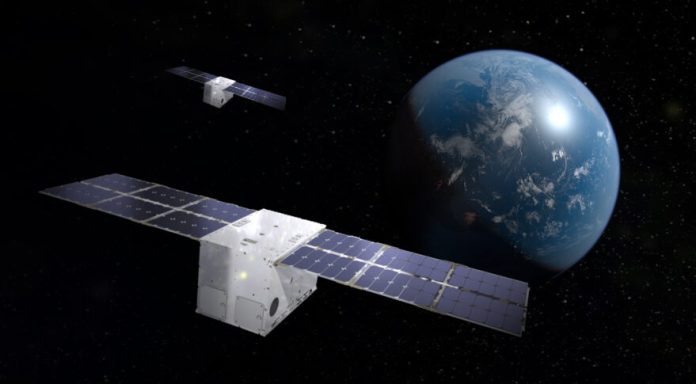
In a demonstration Lockheed Martin plans to show how small satellites can be used to upgrade constellations or provide life-extension services
HUNTSVILLE, Ala. — Lockheed Martin plans to launch two cubesats later this year to demonstrate how small satellites can service other satellites in orbit, the company said Aug. 10.
A pair of 12U cubesats have completed environmental testing and will launch as early as this fall to perform a demonstration in geosynchronous Earth orbit called LINUSS, short for Lockheed Martin In-space Upgrade Satellite System, the company said.
The intent is to show how small satellites can be used to upgrade constellations or provide life-extension services like refueling.
“LINUSS will be the first step flight-qualifying this technology,” said Chris Crawford, vice president of advanced program development for Lockheed Martin Military Space.
The company’s near-term goal is to service the next generation of Global Positioning System satellites known as GPS 3F that use Lockheed Martin’s LM 2100 satellite bus platform.
The mission will seek to “validate essential maneuvering capabilities for Lockheed Martin’s future space upgrade and servicing missions, as well as to showcase miniaturized space domain awareness capabilities,” said Crawford.
Other companies participating in the demonstration include Innoflight for satellite avionics and VACCO Industries for propulsion. Lockheed Martin developed the inertial measurement units, machine vision and software needed for in-space docking.
David Barnhart, LINUSS program director, said the company also wants to show that cubesats can provide more payload accommodation and on-orbit processing than other small satellite platforms currently in the market.
The LINUSS cubesats were developed in collaboration with Tyvak Nano-Satellite Systems, a Terran Orbital Company in which Lockheed Martin made a strategic investment.
A spokesman told SpaceNews that the cubesat form factor was chosen for this demonstration to “rapidly prove out technology on orbit” and the long-term goal is to scale it up to larger systems.
– Advertisement –